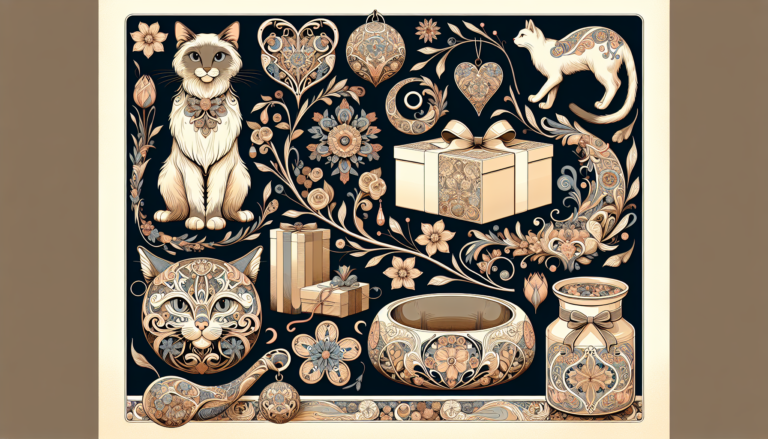Cats Keep Fighting: Understanding and Managing Aggression
Cats keep fighting can be a distressing issue for pet owners, affecting the well-being of both the cats and the household. This article explores the common causes of cat aggression, provides practical solutions for managing and preventing fights, and highlights the importance of a harmonious living environment. By understanding the underlying reasons and implementing effective strategies, you can create a peaceful home for your feline friends.
Cats Keep Fighting: Common Causes
Territorial Aggression
Territorial aggression is a common reason why cats keep fighting. This type of aggression arises when cats perceive a threat to their territory. Cats are naturally territorial animals, and they may fight to establish dominance or to protect their space. To reduce territorial aggression, it’s important to provide each cat with their own space, including separate feeding areas, litter boxes, and resting spots. If you need more guidance, feel free to contact us.
Play Aggression
Play aggression is another reason why cats keep fighting. Young cats, in particular, may engage in rough play that can sometimes escalate into real fights. It’s essential to distinguish between play aggression and true aggression. Play aggression typically involves stalking, pouncing, and gentle biting, while true aggression is more intense and can lead to injuries. To manage play aggression, provide plenty of toys and interactive playtime to satisfy your cat’s hunting instincts. You can find a variety of cat toys on our website.
Fear Aggression
Fear aggression occurs when a cat feels threatened or scared. This can happen in response to a new pet, a visitor, or even a loud noise. Cats that experience fear aggression may hiss, growl, and attack to protect themselves. To address fear aggression, it’s important to identify and remove the source of the fear. Gradual desensitization and positive reinforcement can also help your cat feel more secure and less aggressive. For more tips, visit our Nature Inspired collection for calming cat-themed jewelry.
Redirected Aggression
Redirected aggression happens when a cat is aroused by something it cannot attack, such as a bird outside a window. The cat may then redirect its aggression towards another cat or even a human. This type of aggression can be challenging to manage, but providing alternative outlets for the cat’s energy, such as toys or scratching posts, can help prevent redirected aggression. Our Sterling Silver collection includes beautiful cat-themed jewelry that can serve as a calming reminder for both you and your cat.
Cats Keep Fighting: Signs of Cat Aggression
Physical Signs
Physical signs of cat aggression include dilated pupils, flattened ears, an arched back, and a puffed-up tail. These are all defensive postures that a cat may adopt when feeling threatened. Other physical signs include hissing, growling, and showing teeth. If you notice any of these signs, it’s important to give your cat space and avoid approaching them to prevent a potential attack. If you need more detailed guidance, you can reach out to us at (800) 343-1604.
Behavioral Signs
Behavioral signs of cat aggression can be more subtle but are equally important to recognize. These signs include hiding, avoiding interaction, and changes in eating or litter box habits. A cat that is feeling aggressive may also become more clingy or seek out more attention. Understanding these behavioral changes can help you address the underlying issues and prevent further aggression. For more information, visit our Cat Themed Jewelry page.
When to Seek Professional Help
If the signs of cat aggression persist or worsen, it’s important to seek professional help. A veterinarian or an animal behaviorist can provide a thorough assessment and recommend specific strategies to manage the aggression. They can also rule out any underlying medical conditions that may be contributing to the behavior. Early intervention is key to preventing the aggression from becoming a chronic issue. You can contact us at [email protected] for more resources.
Preventing Cat Fighting
Environmental Enrichment
Environmental enrichment is a crucial aspect of preventing cat fighting. A stimulating environment can help reduce stress and competition among cats. Create a safe and stimulating environment with multiple scratching posts, toys, and perches. This will give your cats plenty of opportunities to engage in natural behaviors and reduce the likelihood of fights. Our All Jewelry collection includes items that can help create a calming and enriching environment.
Consistent Routines
Establishing a consistent routine for feeding, playtime, and litter box maintenance can also help prevent cat fighting. Cats thrive on routine and predictability, and a consistent schedule can reduce stress and anxiety. Make sure to feed your cats at the same time each day, provide regular play sessions, and keep the litter boxes clean and accessible. For more tips on maintaining a consistent routine, visit our Cat Themed Jewelry page.
Gradual Introductions
Introducing new cats gradually can prevent territorial aggression and reduce the likelihood of fights. When introducing a new cat, keep them in a separate room initially and allow them to get used to the smells and sounds of the household. Gradually introduce the cats under controlled conditions, using positive reinforcement to encourage friendly interactions. For more detailed guidance on gradual introductions, you can reach out to us at [email protected].
Pheromone Diffusers
Pheromone diffusers can be a useful tool in reducing stress and anxiety in cats. These diffusers release synthetic versions of the pheromones that cats produce naturally, which can help create a calm and relaxed environment. Place the diffusers in areas where your cats spend the most time, such as near their feeding areas and sleeping spots. Pheromone diffusers are a non-invasive and effective way to manage cat aggression. For more information on pheromone diffusers, visit our Nature Inspired collection.
Managing Cat Aggression
Behavior Modification Techniques
Behavior modification techniques are essential for managing cat aggression. These techniques involve teaching your cats new behaviors and reinforcing positive interactions. Some effective behavior modification techniques include clicker training, positive reinforcement, and counterconditioning. Consistency and patience are key to the success of these techniques, and it may take time to see significant improvements. For more tips on behavior modification, visit our Sterling Silver collection.
Professional Interventions
In some cases, professional interventions may be necessary to manage cat aggression. A veterinarian or an animal behaviorist can provide expert guidance and tailor a treatment plan to your specific situation. They can also recommend medications or supplements to help reduce anxiety and aggression. Professional help can be especially beneficial in multi-cat households where the dynamics are more complex. For more information on professional interventions, you can reach out to us at [email protected].
Long-Term Solutions
Managing cat aggression is an ongoing process that requires long-term commitment and effort. Long-term solutions include maintaining a consistent routine, providing environmental enrichment, and continuing behavior modification techniques. It’s important to monitor your cats’ behavior regularly and make adjustments as needed. With time and effort, you can create a harmonious and peaceful home for your feline friends. For more long-term solutions, visit our All Jewelry page.
Comparison Table
| Feature | Environmental Enrichment | Behavior Modification | Professional Help |
|---|---|---|---|
| Effectiveness | High | High | Very High |
| Ease of Implementation | Moderate | Moderate | Low |
| Cost | Low | Low | High |
| Time Commitment | High | High | Moderate |
| Suitability for Multi-Cat Households | High | High | High |
Practical Tips for Preventing and Managing Cat Fighting
- Create a safe and stimulating environment with multiple scratching posts, toys, and perches.
- Establish a consistent routine for feeding, playtime, and litter box maintenance.
- Use pheromone diffusers to reduce stress and anxiety in cats.
- Introduce new cats gradually to prevent territorial aggression.
- Provide each cat with their own space and resources, such as litter boxes and feeding areas.
- Seek professional help from a veterinarian or animal behaviorist if the fighting persists.
Popular Quote
“Cats are connoisseurs of comfort.” – James Herriot
Statistical Fact
According to the American Veterinary Medical Association (AVMA), approximately 30% of pet owners report behavioral issues with their cats, including aggression. This statistic underscores the importance of understanding and addressing cat aggression to ensure a harmonious home environment. For more information, visit the AVMA website.
Three Tips for Managing Cat Aggression
- Provide Vertical Space: Cats love to climb and perch. Installing cat trees and shelves can help reduce territorial disputes by giving each cat their own elevated space.
- Use Positive Reinforcement: Reward your cats for calm and friendly behavior. Treats, praise, and playtime can reinforce positive interactions and reduce aggression.
- Regular Vet Check-ups: Regular veterinary check-ups can help identify and address any underlying health issues that may be contributing to aggressive behavior. For more tips, visit our All Jewelry page.
Popular Questions About Cat Aggression
- Why do cats keep fighting? Cats may fight due to territorial, play, fear, or redirected aggression. Understanding the cause is key to managing the behavior.
- How can I stop my cats from fighting? Create a safe and stimulating environment, establish a consistent routine, and use behavior modification techniques. If the problem persists, seek professional help.
- What are the signs of cat aggression? Physical signs include dilated pupils, flattened ears, and an arched back. Behavioral signs include hiding, avoiding interaction, and changes in eating or litter box habits.
- When should I seek professional help? If the signs of aggression persist or worsen, consult a veterinarian or an animal behaviorist for a thorough assessment and tailored treatment plan.
- Can pheromone diffusers help with cat aggression? Yes, pheromone diffusers can reduce stress and anxiety, creating a calmer environment and helping to manage aggression.
Final Thoughts About Cats Keep Fighting
Understanding and managing cat aggression is crucial for maintaining a harmonious home. By identifying the causes, recognizing the signs, and implementing effective strategies, you can reduce or eliminate fighting behaviors. If the problem persists, don’t hesitate to seek professional help. Your cats will thank you for it, and you’ll enjoy a peaceful and loving environment. For more resources and support, visit our website or follow us on Facebook and Instagram.
Visit our website to find excellent gifts for Cat Lovers and follow us on Social Media for more tips and updates.

